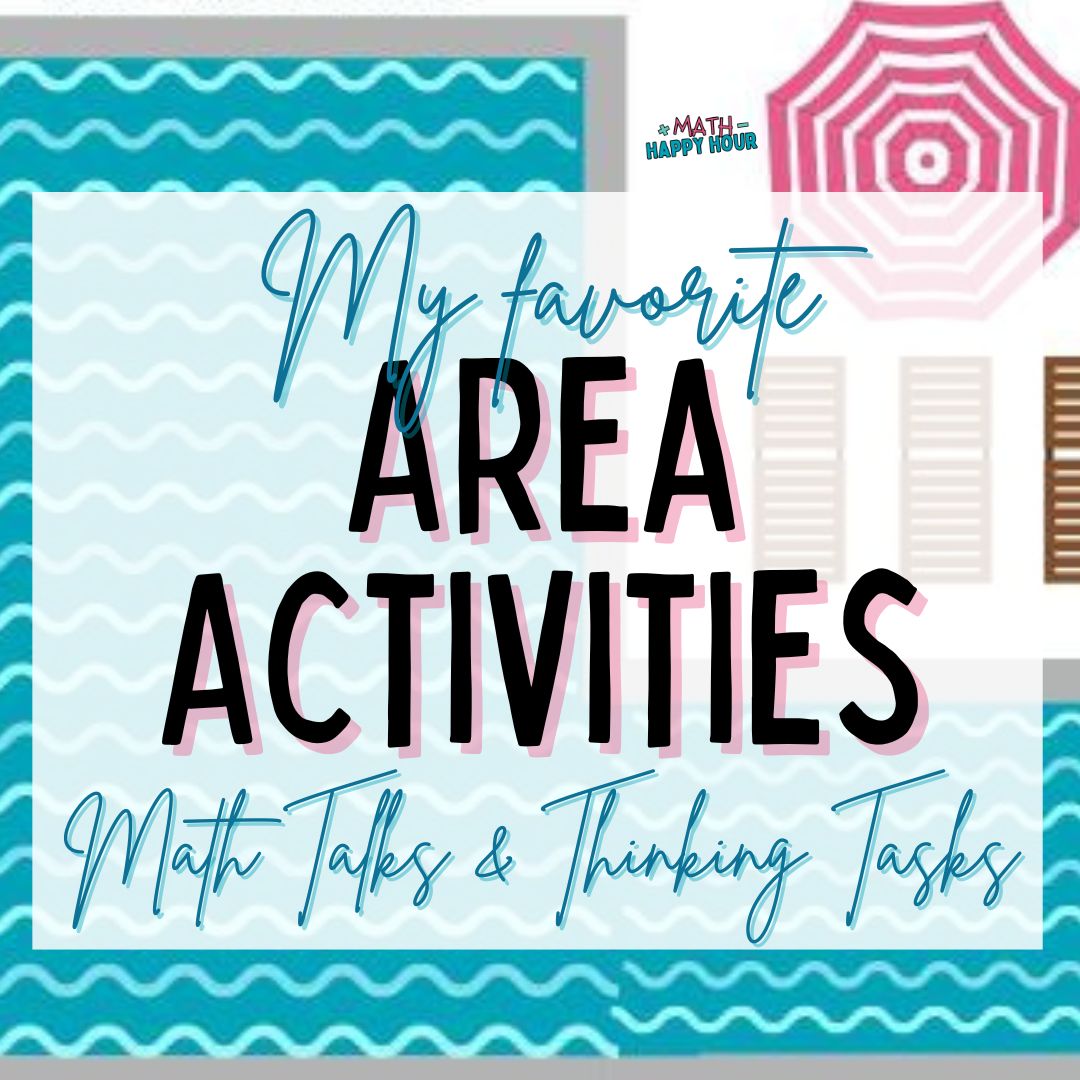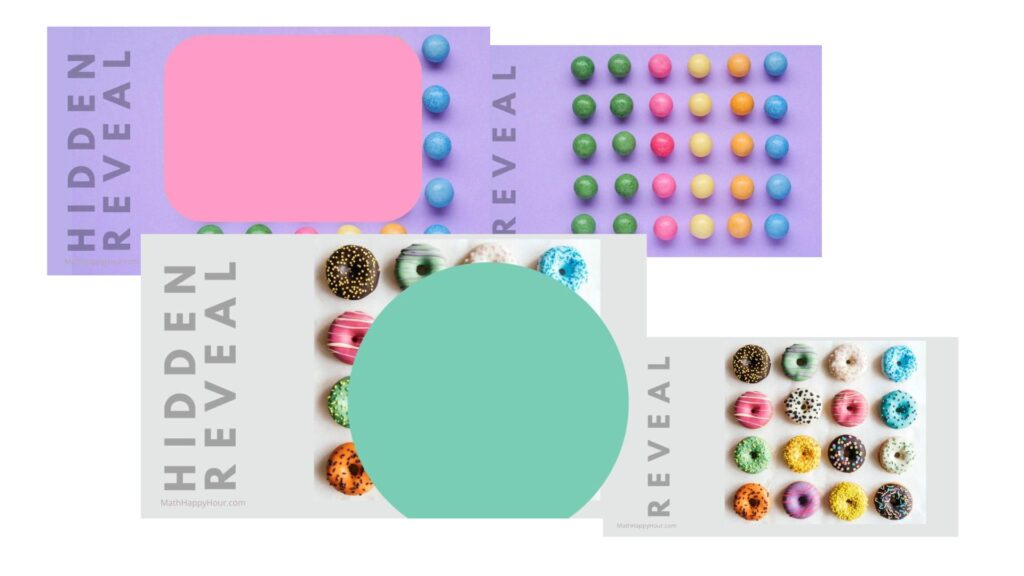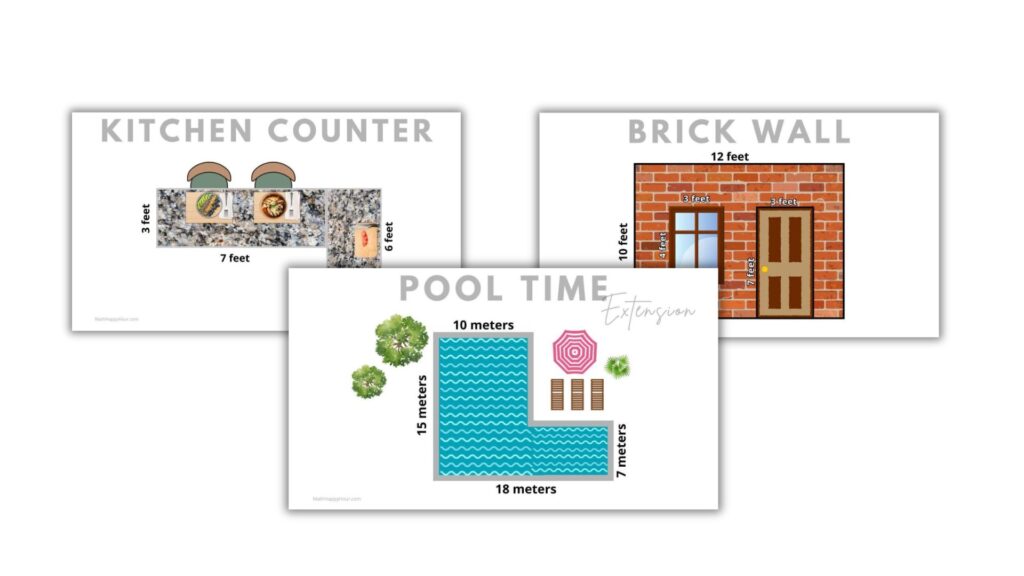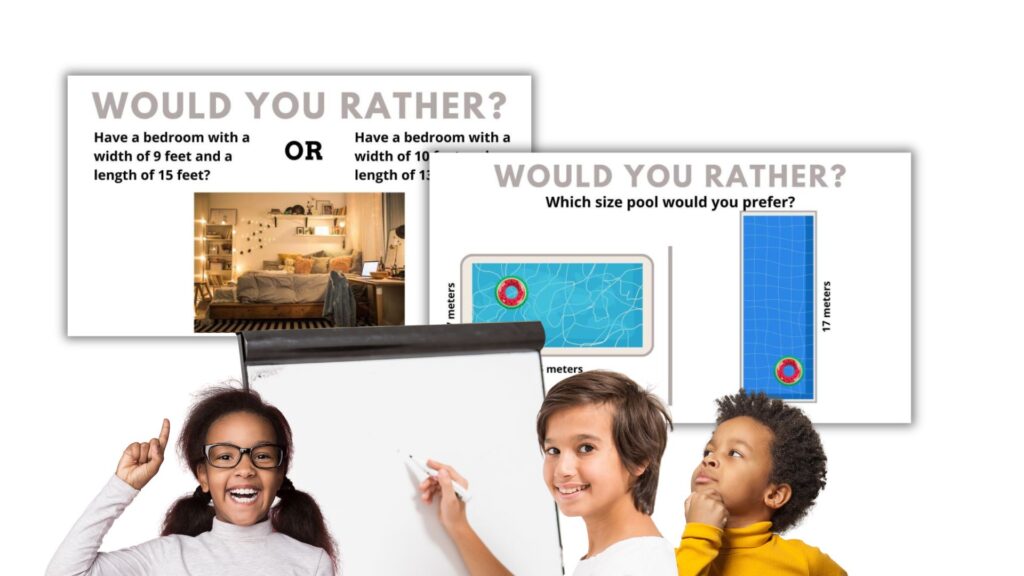Browse around
topics
Hey Friend!
Elementary Teachers who love talking about math.
We're Tiana & Whitney
Teaching math was not our favorite. We taught math traditionally with memorized steps and timed tests because we didn't know math could be fun. Read our story
The Power of Think-Time During Math Talks
Math Talks
Enhancing Math Conversations: Using Talk Posters Effectively
Math Talks
Build Multiplication Fluency with Visual Arrays
Fluency + Fun
Celebrating the Brilliance of Every Student in Math
Teacher Toolbox
Let's get Social!
Follow us on Instagram for the latest math tools and strategies!
Area Activities: Math Talks & Thinking Tasks That Work

Posted In
March 25, 2025
Posted On
Teaching area in elementary math can be so much more than memorizing length x width = area! When students truly understand the concept of area, they become creative problem-solvers who can flexibly think about space, multiplication, and measurement.
In my classroom, I use area activities such as Math Talks and Thinking Tasks to help students develop a deep, conceptual understanding of area before introducing standard calculations.
I’ll be honest—teaching area used to be a real struggle in my third-grade classroom. I always taught area and perimeter together, and every year, students confused the two. No matter how many anchor charts or examples I used, they still mixed them up!
Eventually, I decided to separate the two concepts, teaching area first and focusing on it deeply before moving on to perimeter. It made all the difference! I also realized that many area activities lacked meaningful, real-world connections. Now, I use these activities to help my students truly grasp area in a way that sticks with them beyond just one lesson.
If you’ve ever struggled with students confusing area and perimeter, or just memorizing formulas without really understanding them, I’ve got you! Let’s dive into my favorite area activities that make this concept stick.
If you are looking for ready-made visual and meaningful Area and Perimeter Activities – check out our TPT Resource: Area & Perimeter Math Talks and Tasks.
Setting the Stage: Introducing Area Naturally
Before I even begin teaching area formally, I start by embedding the vocabulary into our daily routine. For example:
- When I have my students gather on the rug for a math talk, I say, “Please sit on the area of the rug.”
- During our morning meeting, I ask students to sit around the perimeter of the rug.
This simple exposure helps students become familiar with the words area and perimeter in a natural, low-pressure way. I also prefer to teach area first, separately from perimeter, since the two can be easily confused.
Step One: Building the Foundation with Arrays
Before jumping into measuring space, I help students build an understanding of rows and columns through arrays. Since multiplication is an essential part of understanding area, this is a perfect bridge between concepts.
One of my favorite Math Talks to introduce area is Hidden Reveal with arrays. Here’s how it works:
- Part of an array is hidden, and students must use what they know about rows and columns to determine the total and the hidden number of objects.
- This helps students connect multiplication and spatial reasoning in a meaningful way.

If you would like some basic array visual math talk slides, you can grab our free square facts array slides.
Step Two: Visualizing Area with Math Talks
Visual Math Talks are a game-changer for tricky concepts like area. Here are a few of my favorites:
✅ How Many? – I show students a variety of images relating to area. For example, a rectangle covered with square tiles or tiles covering a rectilinear figure. This helps students recognize that area is measured with square units.

✅ Same, but Different – Students compare two different images. For example, two rectangles of the same size but measured with different-sized squares. This highlights why the size of the unit square matters when calculating area.
Additionally, I show a rectangle and the same rectangle split into smaller rectangles. This visually demonstrates the distributive property using an area model and reinforces that area is additive.
👉 Want ready-to-go Math Talks for area? Check out my Area & Perimeter Math Talk Resource on TPT!

Step Three: Hands-On Exploration
After our Math Talks, it’s time to explore area in a hands-on way! One of the simplest, yet most powerful area activities is tiling with one-inch squares. Here’s how we do it:
- Students use one-inch tiles to cover objects in the classroom (notebooks, desks, tables, index cards, etc.).
- They quickly realize that tiles cannot overlap or have gaps—a key understanding of area measurement.
This activity reinforces the concept of tiling and helps students transition to counting unit squares on paper.
Step Four: Applying Area in Real-World Problems
Once students grasp the basics, I introduce Thinking Tasks that push their problem-solving skills. Two of my favorites are:
🌱 Visual Thinking Tasks – Students analyze real-world images (gardens, pools, countertops) with some given dimensions and must work in groups to find the total area.
This makes area relevant and engaging and they have to problem-solve to figure it out. I don’t “teach” a strategy for solving these, I let them work collaboratively to solve these visual puzzles.

🤔 Would You Rather? – Students are given two options and must compare the areas to decide which they would rather have. For example, Would you rather have a 6×8 ft. room or a 5×10 ft. room?
This makes area meaningful in a decision-making context.

📢 Want an easy way to implement real-world area activities? Grab my Area & Perimeter Thinking Tasks on TPT!
Why This Approach Works
By combining Math Talks, hands-on activities, and real-world Thinking Tasks, students move beyond memorization and develop a true conceptual understanding of area. They:
- Build strong spatial reasoning skills.
- Develop multiplicative thinking instead of just counting squares.
- Understand why area formulas work, instead of just applying them.
If you’re ready to transform how you teach area, start with just one of these strategies in your next lesson! I promise, your students will think about area in a whole new way.
💡 Want ready-made Math Talks and Thinking Tasks for area? Check out my TPT resource here!
What’s your favorite way to teach area? Let’s chat in the comments!
Pin
Share
Leave a Reply Cancel reply
Previous Story
next Story
© 2025 Math Happy Hour. Site by Sugar Studios
Heard about Math Talks but unsure where to begin? 🤷♀️ Don't stress!
5 Steps to Get Started with Math Talks
Join us on Insta
We're so glad you're here, stick around and let's talk about math! xo Whitney & Tiana